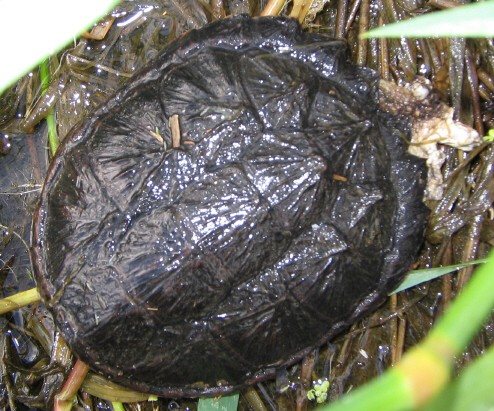|
McGILL BIRD OBSERVATORY |
||||||||||||||||||||||||||||||||||||||||||||||||||||||||||||||||||||
Welcome
to the McGill Bird Observatory weekly report.
Click here for a complete listing of our archives.
Bander-in-charge:
Marie-Anne Hudson Notes: As expected, June was a quiet month at MBO. Our first census of the summer season was conducted on the 9th of June, and they've been going about twice a week since then thanks to our loyal censusers (please see above). The average number of species seen during each visit ranged between 28 and 39, however the total number of species observed during the month of June was a respectable 52. We even managed to scrounge up a new species for the year, an American Woodcock flushed from the reeds past C. In terms of unusual species for MBO, a couple of Purple Martins were spotted on census, and a Black-and-white Warbler may have stuck around to breed, though it was only heard once. It’s understandable that things have quieted down considerably, as most of the birds that have remained at MBO have settled down to breed. Most noticeably, the Common Yellowthroats have almost completely ceased singing, opting instead to skulk around the bushes and ‘cheack’ at you as you walk by. The Rose-breasted Grosbeaks and Warbling Vireos, once so vocal it was hard to hear anything else, have fallen completely silent. We’ve certainly noticed the results of this year’s breeding season with some excitement: young Wood Ducks have been peeping in the ponds, 2 young Blue Jays were seen with a parent, young American Robins and Red-winged Blackbirds abound (making for some very aggressive parents), and young House Sparrows, Veerys and Baltimore Orioles have been either lurking in the shrubbery or loudly demanding food. We also had the opportunity to band 6 young Tree Swallows, quite possibly some of the squirmiest little birds we’ve handled in a while.
The ten species most frequently observed this week were roughly the same as the last week of the Spring season, though their order of abundance changed considerably. While Red-winged Blackbirds continue to dominate, several species moved up in the rankings this week, such as Yellow Warbler, American Goldfinch, Tree Swallow, Song Sparrow, and Ring-billed Gull. The complete disappearance of our local Canada Geese made room for several new additions to the list, however the tie in number made the list too long to include in the table itself: Mallard (well, not completely new…), Black-capped Chickadee, American Robin, Common Yellowthroat and Common Grackle. What about the other species at MBO? Well, we’ve got a raccoon family of 3 little ones on the trail linking Mosquito Alley to B, and a Skunk that REALLY doesn’t like being watched (MAH discovered this as she was attempting to identify a small duckling hiding in some reeds, completely unaware that the skunk was unhappy she was walking back and forth in front of its hiding spot – needless to say once the skunk made its presence known, MAH quickly retreated). The vegetation has really gone wild, with some of the grasses in the meadow now taller than most of us (but probably not Marcel). We hope to continue censusing throughout July, and will begin to gear up for the upcoming fall season soon. Last but not least, today (June 28) two more species were added to this summer's list - a Northern Harrier, and an Osprey flying over, carrying a massive fish!
|


